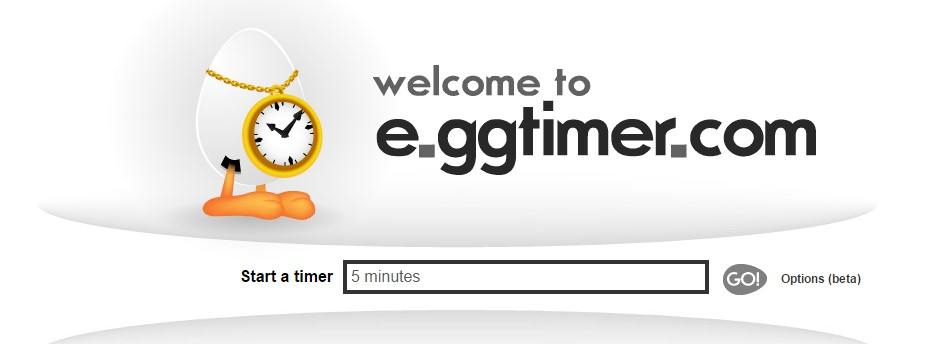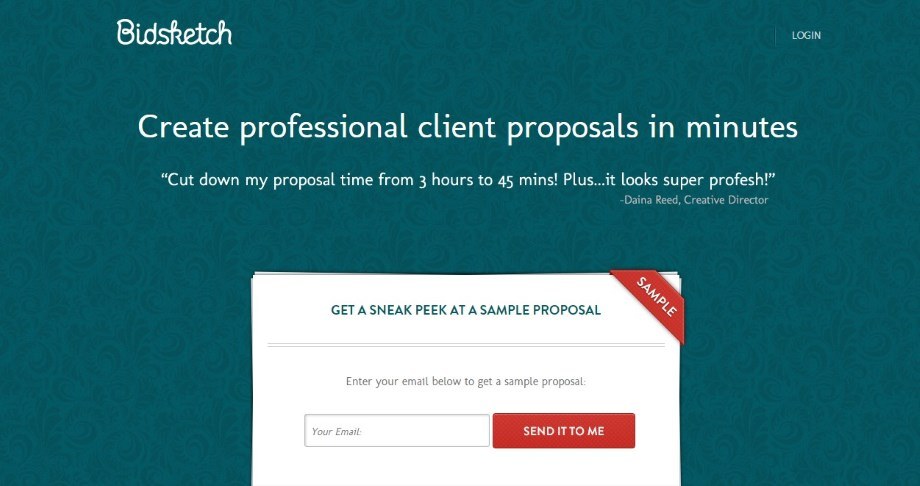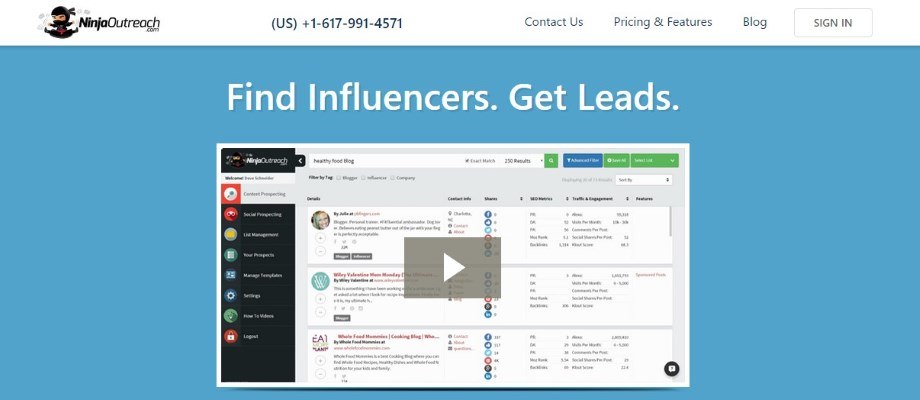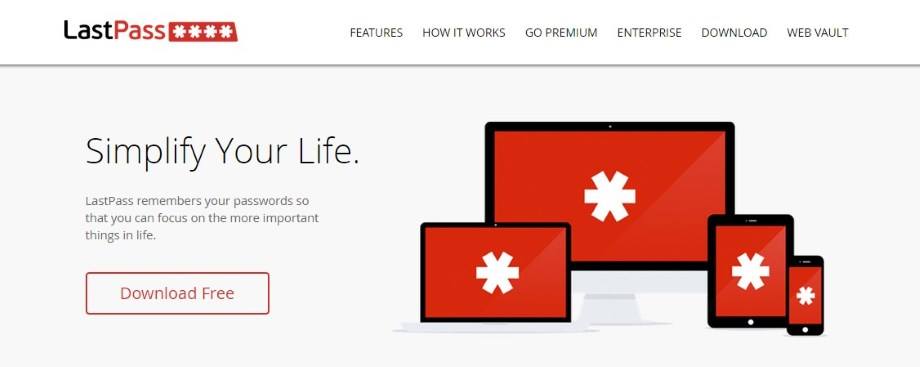Freelancing is almost the perfect job.
I’m saying “almost” because it does have its own unique challenges, and isn’t exactly as joyful, stress-free of a career as many people believe it to be.
Freelancing can be tough. You need a lot of resilience, self-discipline, and an overall ability to work effectively on your own terms. In other words, you need to learn how to remain productive. If you’re not, your career will be short-lived.
That’s where various tools come into the picture!
But since you’re probably already familiar with the Evernotes and the Google Calendars of the productivity world, today let’s focus on some non-obvious tools. However, although they might be less known, this doesn’t make them any less valuable, which you’ll realize in just a minute.
1. E.gg Timer
E.gg Timer is a very unique tool. Basically, it’s an easy to use and nicely configurable countdown timer. For example, to set the timer to 25 minutes, all you need to do is visit e.ggtimer.com/25minutes. Setting any other countdown is just as simple.
Why use it?
E.gg Timer is great as a Pomodoro clock (e.ggtimer.com/pomodoro) or for any other kind of task that requires you to take part in it for a specific period of time. Working with E.gg Timer is certainly a lot more efficient than constantly looking at your wristwatch.
2. Toggl
Another time tracking tool, but this one is meant to help you keep up with specific work / projects / client tasks. To use it, just install it locally, click Start and assign a name to whatever you’re doing.
Why use it?
With Toggl, you can assign projects to given time slots. This lets you track the exact amount of time you’re spending working on individual client projects. Toggl also notifies you when you come back after being away from the computer, and asks if the time should be discarded or kept (in case you forgot to turn the timer off).
3. Bidsketch
Bidsketch is the best client proposal tool available on the web today. With it, you can create, edit, and then send client proposals. After that, Bidsketch also notifies you if and when the client viewed your proposal.
Why use it?
It helps you figure out one of the most time consuming parts of the freelance business. Proposals and pitching clients your services are incredibly important for your bottom line. So why not use an advanced tool that can remove a lot of the headache from the equation and simply let you work more effectively?
4. Trello
Trello provides you with a visual way to organize various projects going on in your life. Trello works through what’s called Trello boards, lists and cards. You can re-align cards on each board through drag-and-drop, edit each card individually, add images, text, and simply let the board work alongside your own process.
Why use it?
Trello doesn’t force you to adapt to their way of organizing. The tool is flexible and can adjust to your own individual needs. You can use it to manage client projects, ideas, tasks for individual projects, and everything else you see fit.
5. Grammarly
Grammarly is an advanced grammar checker tool. Don’t mistake for standard spellcheckers you can find in Word though. Grammarly goes a lot further. It checks whatever you write against common grammar issues, style issues, and a lot more. There are actually 250+ types of errors that Grammarly can recognize.
Why use it?
This isn’t only a tool for freelance bloggers or writers. Grammarly works everywhere, which means that through a web browser plugin, it can also help you write emails, forum posts, blog comments, or whatever else. I’m sure I don’t need to tell you how important it is to always send grammatically correct emails to your clients!
6. Lightshot
Lightshot is my secret screenshot tool. It works on Mac and Windows and it’s more than easy to use. It hooks up to your system’s native screenshot functionality (e.g. on Windows it’s the Print Screen key, on Mac it’s Command+Shift+9). So when I press Print Screen, Lightshot takes over and lets me select the area I want in the screenshot. Then, I can annotate things with arrows, borders, custom text. After that, I can save the image, share it on social media, or copy it to clipboard.
Why use it?
Taking screenshots is probably something you’re doing fairly often. Either you want to show something to your client, include an image in a proposal, or even post it on a blog, no matter what it might be, taking screenshots without a dedicated tool is a hassle. With Lightshot, it only takes a couple of clicks.
7. Swipes
Swipes is a simple, yet effective to-do list app that somehow manages to stand out in a crowded marketplace. There’s more than enough such apps out there, but what makes Swipes different is its ease of use, and its integration with Evernote. You can create new tasks in Evernote and then act on them in Swipes.
Why use it?
The problem with to-do list apps is that they are only somewhat integrated with other tools. On one hand, you can export your things from one tool to another, but you can never be sure that some single task won’t get lost in the shuffle every once in a while. Swipes was built specifically to talk with Evernote, so the integration works without any hiccups.
8. Ninja Outreach
Ninja Outreach is an advanced outreach tool. This means, it helps you discover people worth reaching out to (for various purposes), check their reputation, and then even contact them directly.
Why use it?
Outreach is an integral part of being a freelancer – no matter if we’re talking client outreach or blogger outreach. The downside of outreach is that it can take a lot of time. First you have to find a sufficient number of contacts, then evaluate their reputation, then find their contact data, and only then you can actually send them a message. With Ninja Outreach, each of these steps can be taken care of quicker and in a more efficient manner.
9. LastPass
LastPass is the best free password manager on the market. As simple as that. In short, it lets you manage all your passwords (for apps, services, tools, etc.) and make them accessible to you through browser plugins and mobile apps.
Why use it?
As a freelancer, you’re likely working on a couple of different devices and probably have your user accounts on tens if not hundreds of sites. Then, there are also profiles related to your client work, for instance, your profiles on their websites where you need to submit your work. You can’t have weak passwords set on those, yet remembering a complex one is impossible. This is where LastPass comes into play. It takes care of keeping your login credentials in a safe place and gives you access to everything through one master password.
10. CoSchedule
CoSchedule is your top tool for creating and managing a publishing schedule and then setting social media updates for each publication you release. It offers a lot of advanced features that every editor will appreciate.
Why use it?
Granted, this one is more useful for freelance writers, bloggers, and businesses working with websites on WordPress. Where CoSchedule stands out is delivering you a smart scheduling feature that focuses on building a whole marketing strategy around the content you’re publishing. This is something your clients will surely be interested in.
11. Shopify
Let’s skip to the “why use it” part right away.
Shopify is perhaps a surprising entry, since it’s an e-commerce solution, but it can actually be very useful for a freelancer. Among its many features – just see the reviews – Shopify lets you sell not only products, but also services. This means that you can create a handful of standardized services that are the most popular with your clients.
During your proposal and negotiation process, you can send the client over to your Shopify store and let them choose the services they need. Keep in mind that you get to use all the standard e-commerce features here, which can help you improve your conversion rates. For instance, you can offer discounts, coupons, or anything else an online store owner would do.
What should find its place as the entry #12 on this list? Feel free to share your picks in the comments.























































